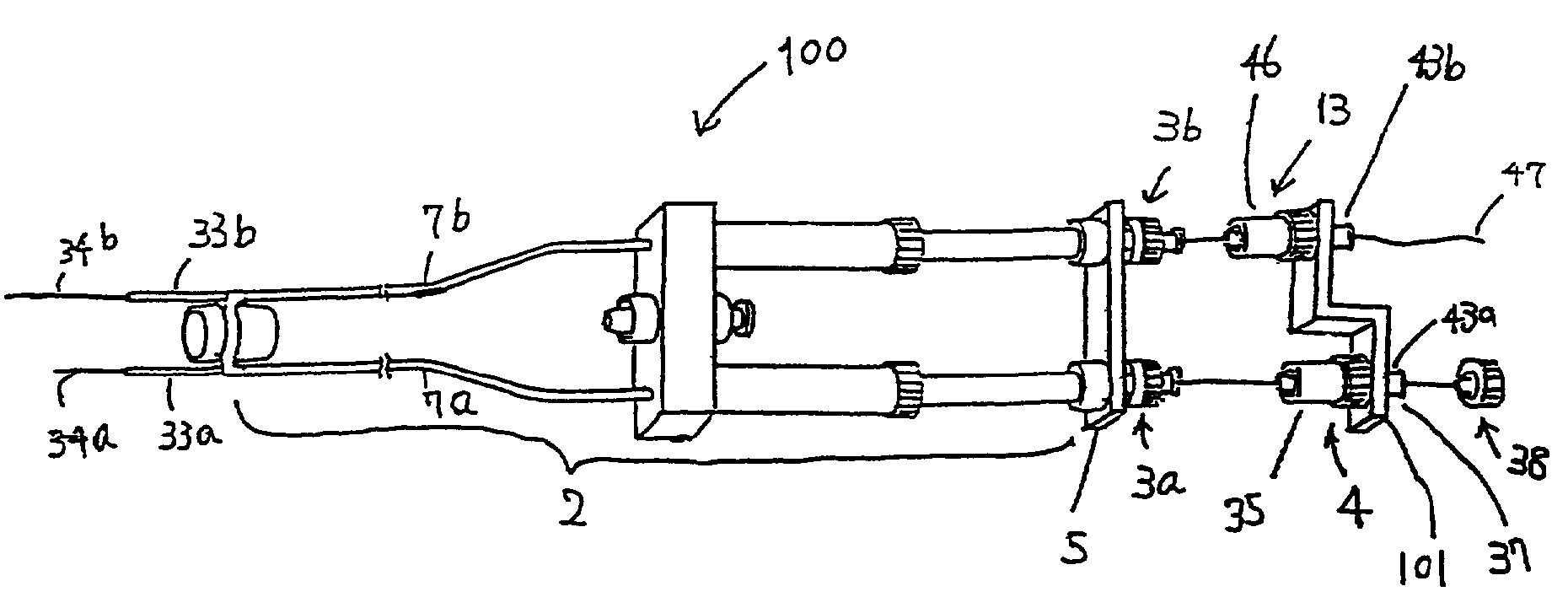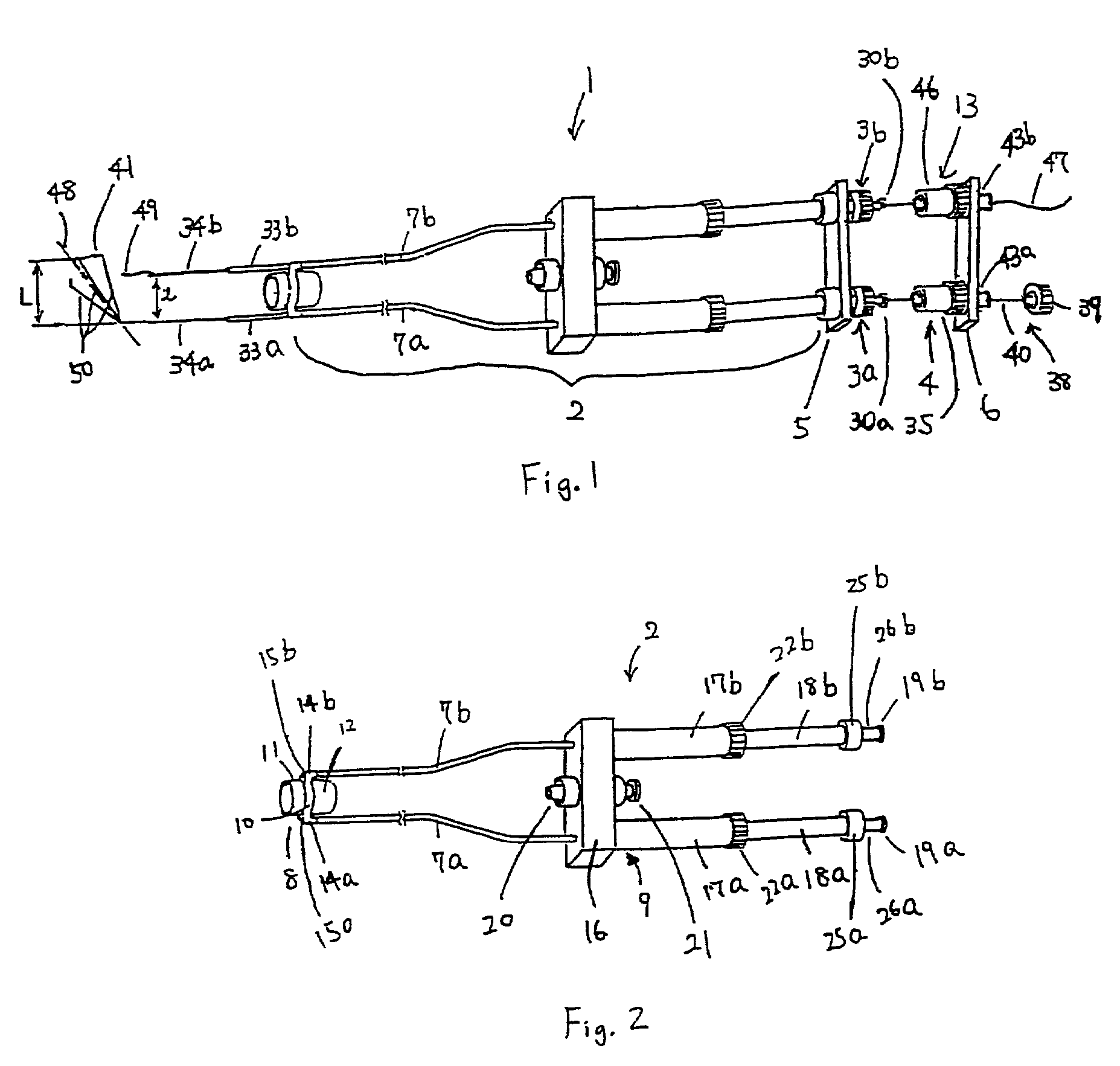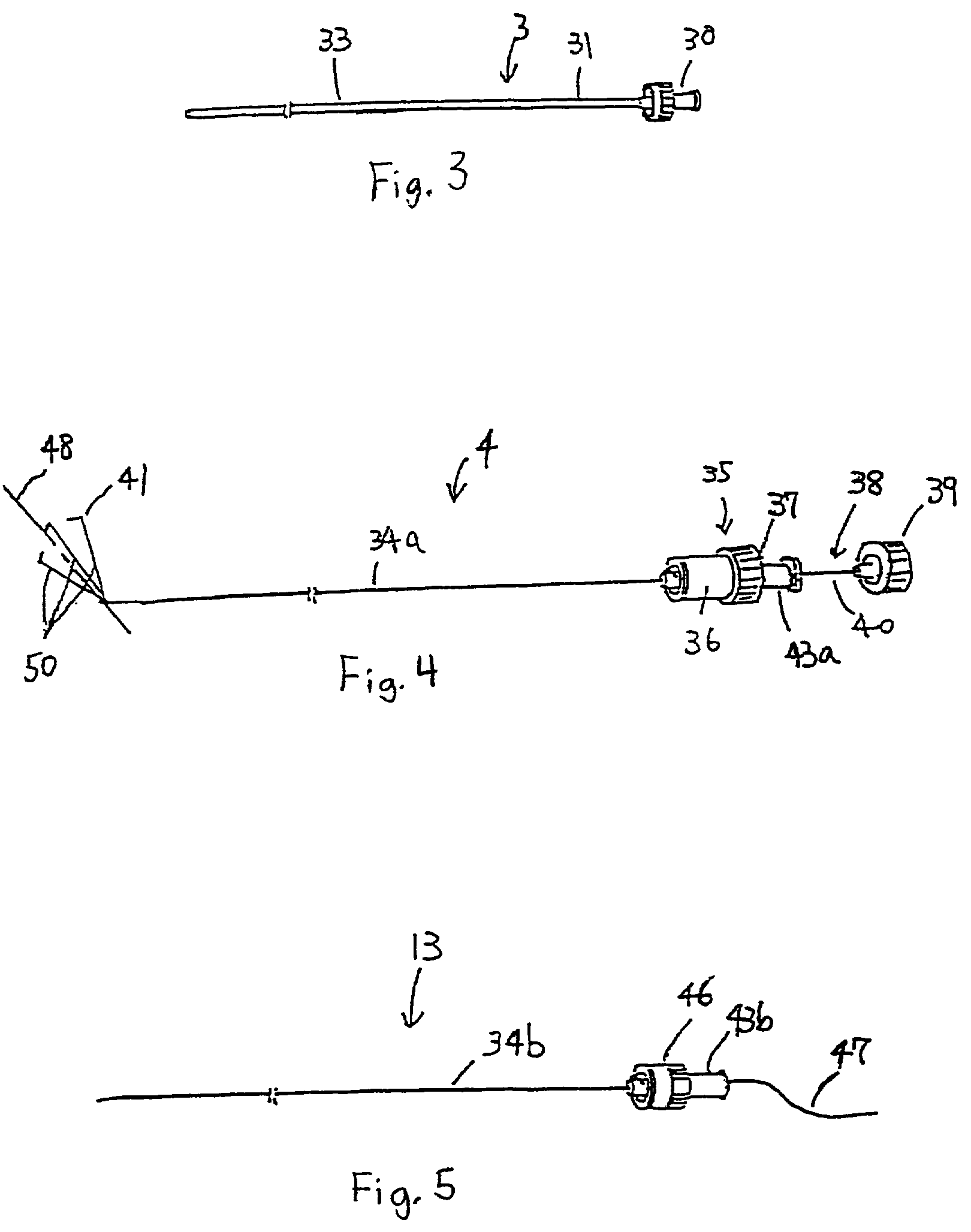Endoscopic instruments
a technology of endoscopic instruments and sutures, applied in the field of sutures, can solve the problems of high surgical operation cost, post-operative hospitalization, and high surgical invasiveness, and achieve the effect of accurately suturing in-vivo tissu
- Summary
- Abstract
- Description
- Claims
- Application Information
AI Technical Summary
Benefits of technology
Problems solved by technology
Method used
Image
Examples
first embodiment (
FIGS. 1 to 18)
[0046]Description of a Piercing Device and a Knot Pusher (FIGS. 1 to 9)
[0047]A piercing device 1 comprises a main body 2, inner sheaths 3a and 3b, needles 4 and 13, an inner sheaths-coupling member 5, and a needles-coupling member 6.
[0048]The main body 2 comprises two outer sheaths 7a and 7b, caps 8 connected at the distal ends of the sheaths 7a and 7b, and an operation section 9 connected at the proximal end of the sheaths 7a and 7b. The cap 8 comprises an outer sheaths-connecting section 10, a distal cylindrical section 11, and a distal mounting section 12. The distal cylindrical section 11 is made of a relatively hard material. Preferably, it is made of a transparent plastic material such as polycarbonate lest it should obstruct the vision of a first endoscope 27. Preferably, the inner diameter is about 5 to 15 mm, the wall thickness is about 1 mm. The length is about 3 to 10 mm, and a shorter cylinder is better.
[0049]The distal mounting section 12 is cylindrical an...
second embodiment (
FIGS. 19 to 21)
[0110]Only points different from those of the first embodiment are described.
[0111]A piercing device 100 is the piercing device 1 with the needles-coupling member 6 replaced by a needles-coupling member 101. The needles-coupling member 101 comprising a distal section 102, a middle section 103 and a proximal section 104, and is shaped like a crank. The distal section 102 and the proximal section 104 are positioned longitudinally apart each other. The distal section 102 should be apart from the proximal section 104 by at least the thickness of tissue to be penetrated, or at least 5 mm.
[0112]Coupling holes 45a and 45b of the needles-coupling member 101 are mounted via the slits 44a and 44b to the narrow sections 43a and 43b of the needle port 37 and needle grip 46. Because the distal section 102 and the proximal section 104 are apart each other, the distal ends of the needle bodies 34a and 34b are longitudinally apart from each other. When the needles-coupling member 101...
PUM
 Login to View More
Login to View More Abstract
Description
Claims
Application Information
 Login to View More
Login to View More - R&D
- Intellectual Property
- Life Sciences
- Materials
- Tech Scout
- Unparalleled Data Quality
- Higher Quality Content
- 60% Fewer Hallucinations
Browse by: Latest US Patents, China's latest patents, Technical Efficacy Thesaurus, Application Domain, Technology Topic, Popular Technical Reports.
© 2025 PatSnap. All rights reserved.Legal|Privacy policy|Modern Slavery Act Transparency Statement|Sitemap|About US| Contact US: help@patsnap.com



